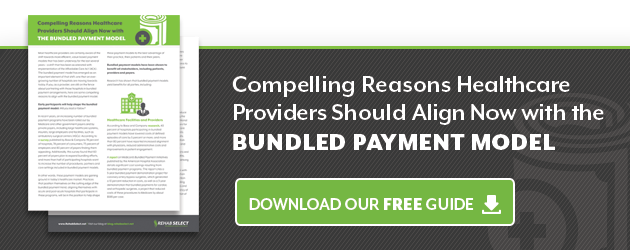 The bundled payment model has been around for a while now and is becoming ever more common in the healthcare landscape. This offers providers who are new to this value-based payment model an advantage that the earliest adopters did not have: the opportunity to learn from the experiences of others. So, based upon that experience, what are some of the most important factors in the success of the bundled payment model?
The bundled payment model has been around for a while now and is becoming ever more common in the healthcare landscape. This offers providers who are new to this value-based payment model an advantage that the earliest adopters did not have: the opportunity to learn from the experiences of others. So, based upon that experience, what are some of the most important factors in the success of the bundled payment model?
Establishment of solid, efficient data analytics and information sharing systems
Achieving the chief goals of the bundled payment model—reducing costs while maintaining or improving quality of care—requires that the full spectrum of care a patient receives can be efficiently evaluated, making it possible to identify areas ripe for performance improvement quickly and accurately. The ability to gather and analyze data on each episode of care in real time is essential to that process, as is quick and transparent data sharing among all providers, payers and other stakeholders involved in each episode of care.
Tracking of patients across the continuum of care
In the traditional fee-for-service model, providers generally only needed to track and/or follow up on patients during the period they were directly under their care. Under the bundled payment model, success in meeting quality and cost benchmarks depends on the performance of each member of the provider chain, which makes having systems and personnel in place to track patients throughout each step of a defined episode of care crucial—from acute care through post-acute services and recovery.
Aggressive and collaborative redesign of the care process
Participating provider groups must work together seamlessly for success with the bundled payment model—starting at the acute care phase and continuing through post-acute care and/or home recovery. Achieving that ideal means choosing care partners carefully, then working with those partners extensively to streamline the care process from beginning to end, developing standardized care protocols and longitudinal care plans, for instance, and collaborating to ensure efficient coordination of care transitions.
Patient engagement
As a means of fulfilling the quality goals of the bundled payment model, participating provider groups are held accountable for patient outcomes. While there is much that providers can do to promote optimal outcomes, those outcomes also depend heavily on the actions of the patients themselves. For that reason, engaging patients in the care process is essential, and that means putting a system in place that provides patients the tools they need to be active participants in their care, including a renewed emphasis on patient education and effective, frequent patient follow-up throughout the care process.
The bundled payment model has shown itself to hold potential benefits for all healthcare stakeholders, keeping costs in check and increasing efficiency while providing a high-quality patient experience. However, success with this relatively new value-based payment model depends upon effective administration, given its fundamental emphasis on sharing both risk and reward. While the factors outlined above are certainly not all-inclusive, they are among the most important in establishing the administrative efficiency provider groups need to make the most of the bundled payment model for their patients, as well as their facilities or practices.





